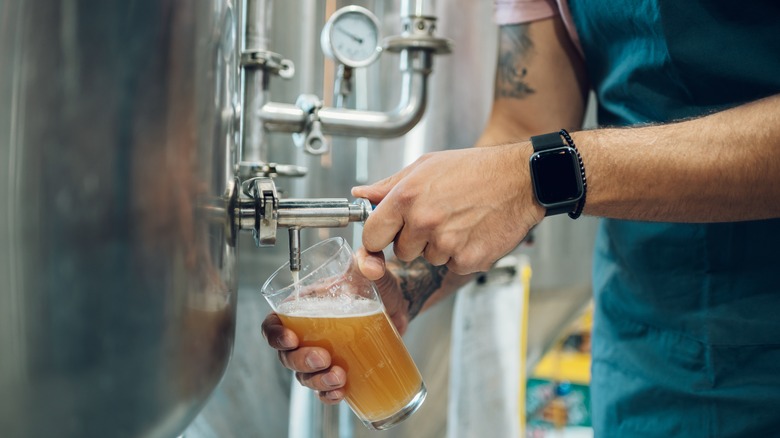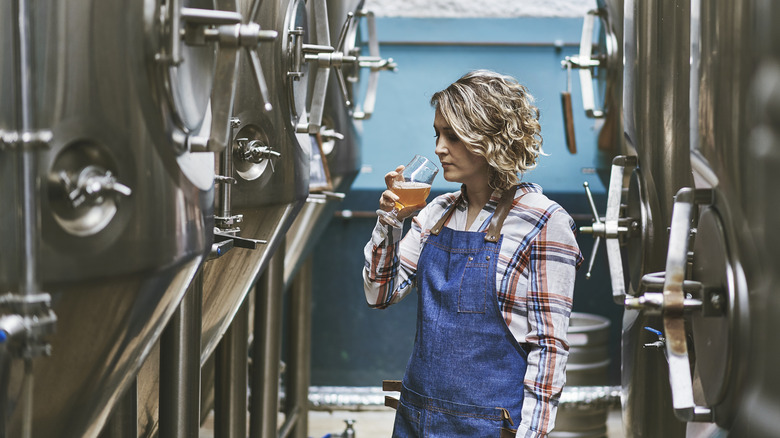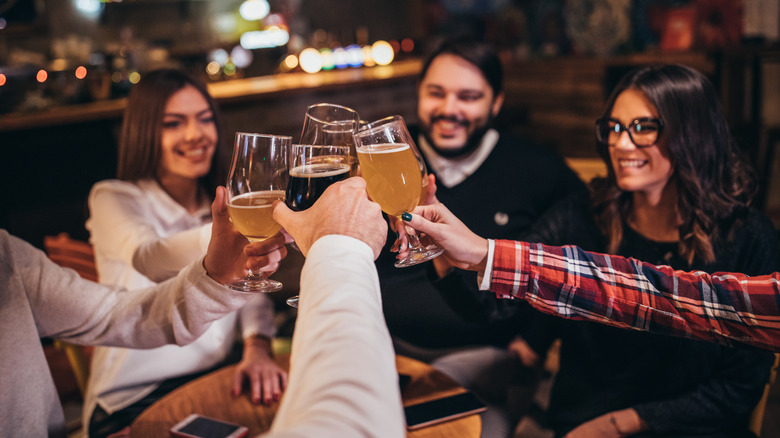America's Love For Craft Beer Started With One Schoolteacher's Curiosity
In the 1970s, a schoolteacher in Boulder, Colorado, informed his classroom that his birthday, January 23, would become National Pie Day. Charlie Papazian's declaration held fast, yet National Pie Day isn't all Papazian has become known for. Not only have Americans been given an official day to enjoy an extra slice of pie, but Papazian can also be credited for the evolution and popularization of homebrewing and craft beer.
Papazian founded the American Homebrewers Association alongside fellow educator Charlie Matzen. He's responsible for kicking off the Great American Beer Festival and reigned as president of the Brewers Association for years. His successor, Bob Pease, described Papazian's impact on the industry: "His influence on the homebrewing and craft brewing community is immeasurable. Who could have predicted that a simple wooden spoon, ingenuity, and passion would spawn a community of more than 1 million homebrewers and 6,000 small and independent U.S. craft breweries." Pease isn't the only one. Jim Koch, the founder of Samuel Adams' Boston Beer Company, also views Papazian as the spark behind America's craft beer movement.
Papazian has taught tips and tricks of the homebrewing trade for 50 years, and many of his students went on to start breweries of their own. Even Papazian said he couldn't have imagined the reach his own interests would have on American drinking culture and the preferences of beer drinkers browsing the aisles of local markets.
Encouraging experimental brewing
Papazian first learned about homebrewing through a neighbor, who had been making ale similar to what was made during Prohibition. "It was crystal clear, pale, beautiful-looking, effervescent beer," Papazian described to Smithsonian Magazine. "And the taste was cidery, almost. I wouldn't say it was better or worse than store-bought beer, but it was very different, and that was enough." Papazian was hooked and began tinkering around with his own recipes, fermenting malt, sugar, water, and yeast in the basement of his workplace. He admits that many of the batches had to be disposed of, but in time he learned the ingredient swaps to make brews good enough to distribute to friends.
Even after becoming an educator at a private elementary school, Papazian was persuaded to teach others to brew beer at home and continued his experimental approach. The beers became increasingly inventive, with spices and ingredients like fruit, honey, and tea added to concoctions. Still, Papazian admits he is amazed at how flavors have evolved, impressed by the playful craft beer varieties that are now being poured into pint glasses.
A legacy of education and creation
Papazian's book, "The Complete Joy of Homebrewing," has since become an industry standard and offers readers tips on how to brew beer at home and what kind of equipment to use. In honor of Papazian's contributions, the Metropolitan State University of Denver raised money from leaders in the beer industry who similarly wanted to recognize Papazian's legacy. Construction of the Charlie Papazian Brewing Education Lab, a massive brewing lab that encourages students to work with professional equipment, is underway.
"I've been a teacher and educator my entire adult life, from teaching preschool through fourth grade and showing adults how to homebrew to launching the American Homebrewers Association and the Brewers Association," Papazian said in a press release about the Denver project. "The original mission of those two organizations was educational, to make beer knowledge accessible to all. So the lab continues the flow of my life's work." A apt legacy for the educator and inventor, indeed.


